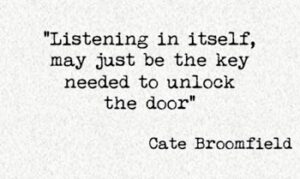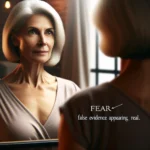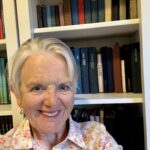Listening: The next step in understanding Severe and Enduring Anorexia Nervosa
Listening: The next step in understanding Severe and Enduring Anorexia Nervosa

A research call
by Cate Broomfield, PhD candidate
How does an individual experience Severe and Enduring Anorexia Nervosa (SE-AN)? Since beginning my PhD in early 2016, this is a question that has continuously struck me while pouring through the literature. What I have found missing in the collection of research on this topic is a greater understanding as to what this disorder means to those affected. The literature itself on SE-AN is conflicting. Clinicians and researchers seem unsure as to how to proceed when an eating disorder lingers for longer than (what I discovered through my systematic review to be) a seven-year period. This seven-year marker seems to represent the time when we all need to panic, as current treatment methods have not been effective, and we don’t know what to do next.
Challenging the dominant medical-practitioner voice
With a new wave of interest into what happens when patients do not recover from SE-AN despite receiving evidence-based treatment methods, there seems to be some new hope beginning to emerge for the individuals affected and their families. What I have discovered in my research, however, is that there is currently a dominating medical-practitioner voice trying to define what happens and what should be done when an individual remains afflicted with an eating disorder past this seven-year time frame. A common theme presented is that anorexia nervosa that becomes severe and enduring is negative, and something that needs to be “fixed.” This was a position explored in research by Conti, Rhodes & Adams (2016), with the proposition of there perhaps being glimpses of light within the darkness, and moments of beauty that stem from metaphors of strength, control and self-worth.
Listening to those who are most affected by the illness
What is absent in most of the literature is a greater focus on listening to what the individuals themselves want us to hear. Excluding the individuals who are experiencing a severe and enduring illness will not help with recovery, or help us take steps forward in our understanding. It is a responsibility of all professionals who play a role in the lives of individuals with any chronic illness, to not exclude the very group who are most affected by the illness. These individuals have a voice, which may vary from one another and from the dominating medical-practitioner voice that currently exists. It is part of a psychologist’s role to engage with individuals, and include them in the exploration of what SE-AN means, and what the best ways are to help individuals move forward.
‘There are voices that need to be heard’
After preliminary research into this topic, it seemed essential that I dedicate my PhD to understanding more about what SE-AN is, and in doing so, communicate an important message to the medical community: There are voices that need to be heard, and these are the voices of the individuals most affected. What I hope to achieve by the end of my research is to provide the community with a greater understanding as to how SE-AN is experienced, by listening to the individuals, rather than simply studying them.
If you are living with SE-AN, your voice counts
My current research project is exploring this through a narrative inquiry approach. This is being conducted through the use of Photovoice, a method more commonly used in educational research, which I am adapting to the current psychological study, in order to provide innovative data and facilitate the interview process.
It is my aim to reach a vast audience. In order to do this, I hope to be privy to a broad spectrum of experiences of SE-AN. If you are living with SE-AN, and would like to participate, additional information can be found on the Research Tab or by sending me an email (cbro9304@uni.sydney.edu.au).
Dialogue between researcher and participant
Participation requires capturing 10 photographs, recording a journal entry into what the images represent in your personal journey with SE-AN, and then using these images to facilitate an interview with myself. This process is collaborative and interactive, with the narrative being created by the exchange of dialogue between the researcher and participant. After the initial construction of the narrative, member checking will occur, with the participant being sent the narrative allowing for any editing or changes to be made by the participant. This process acknowledges that this is the experience of the participant and a construction of their illness, and so they are the experts on the meaning that SE-AN has to them personally.
Listening may be the key that unlocks the door
I conclude with the following thought that needs consideration by all those invested in helping individuals with a severe and enduring illness: Listening in itself, may just be the key needed to unlock the door and remove the power that SE-AN has over the lives of those affected.
Summary: how to take part in Cate’s research
- Participants must be at least 18 years of age and have experienced anorexia nervosa for a period of seven years or more.
- This project is investigating the experience of SE-AN, and will involve participants photographing 10 images that capture their experience with the eating disorder and discussing this in a two-hour interview.
- Participants have reported a sense of power and processing of their experience in other studies using this method. It is hoped that the findings from this study will enhance the overall understanding of how this type of anorexia nervosa is experienced from the perspective of the individuals affected by this disorder.
- There are no costs and your participation will be kept confidential.
- Contact: Cate Broomfield (cbro9304@uni.sydney.edu.au), or visit: https://catebroomfield.wixsite.com/theexperienceofsean for further information. This research is being conducted at the University of Sydney, with HREC approval.
Further reading
If you would like to explore this topic further, citation (1) is Cate’s first paper, a systematic review on the current labeling and defining of SE-AN in the literature. For additional information on the importance of listening to stories of those with SE-AN, citation (2) explores the importance of listening in the dark.
(1) Broomfield, C., Stedal, K., Touyz, S., Rhodes, P. (2017). Labeling and defining severe and enduring anorexia nervosa: A systematic review and critical analysis. International Journal of Eating Disorders, 50(6), 611-623. doi: 10.1002/eat.22715
(2) Conti, J., Rhodes, P., Adams, H. (2016). Listening in the dark: Why we need stories of people living with severe and enduring anorexia nervosa. Journal of Eating Disorder, 4(11). doi: 10.1186/s40337-016-0117-z
About Cate
Cate Broomfield is a second-year PhD candidate at the University of Sydney. As well as being published by the International Journal of Eating Disorders, she has presented her research both nationally and internationally, with her most recent work presented at the 2017 International Conference on Eating Disorders (ICED) in Prague, Czech Republic. She has plans to publish findings from the current study at the 2018 International Congress of Qualitative Inquiry (ICQI) in Chicago, Illinois. Along with the current study, Cate is working on other research with collaboration from the Regional Department for Eating Disorders, Oslo University Hospital, Ullevål, which will hopefully provide more insight into SE-AN. Currently the continuing professional development (CPD) coordinator and associate member for the Australian Psychological Society (APS) Sydney branch, she is also a student member of the Society of Applied Research in Memory and Cognition (SARMAC). She has completed courses in mental health first aid (Rotary Club of NSW), applied suicide intervention training (ASIST; Living Works) and disability awareness (Arts + Disability NSW). Cate looks forward to a career in psychology that includes both research and clinical pursuits, and she particularly enjoys research involving the collaboration of researchers worldwide. Along with working as a telephone crisis supporter for Lifeline Australia, Cate is a qualified yoga instructor and enjoys jogging. She was inspired to conduct research into anorexia nervosa after being introduced to the topic in an undergraduate psychology class. She is further inspired by her research after learning of a good friend’s long-term battle with the illness. Dialogue will continue with Cate as her research progresses, with plans for another entry as a guest blogger after she analyses the findings from the current study.






Dear June – Well done for your research, and dedicating your future as a professional and sufferer….it is just a little glimpse of how this can expand worldwide, and you know how passionate l am also about having a voice and making yourself heard. I believe so many of us are doing this but it takes two, so health practioners need to do their part by listening beyond the food and weight illness on the outside and give the help that is needed on the inside. You are an inspiration to me. xo